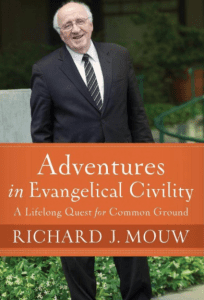One of the more interesting books that has ever come my way is Prophesies of Godlessness: Predictions of America’s Imminent Secularization, a book edited by C. Mathewes and C. McKnight Nichols (no relation). If the title doesn’t interest you, perhaps this line will: “In American history, prophesies of godlessness are as American as American godliness itself” (6). Paradoxically, alongside this worrisome fear that the country was about to fall into apocalyptic doom is the liberal vision that America was about to reach its real vision of losing its religion. This book fascinates me.
What do you think of preaching that warns of imminent or national doom? Or, of imminent or national good days to come?
So, we’ve got two groups in this country: Thomas Jefferson, Thomas Paine, Walter Lippmann, Ralph Waldo Emerson, Walt Whitman, John Dewey, John Judis, and Ruy Teixera — the first group. The second group: Cotton Mather, Jonathan Edwards, Samuel Hopkins, Edwards Amasa Park, William Jennings Bryan, Hal Lindsey, Jimmy Carter, Jerry Falwell, Christopher Lasch, Robert Putnam and Ann Coulter. Each thought the end was imminent; each thought their prophesies — either of the goal of a liberal country denuded of its religion or the demise of godliness by growing secularization or modernity — were about to come to pass.
These two themes are as American as apple pie. The book has eleven studies of these themes, and the approach is to take snapshots of these themes through specific people.
The study makes one wonder if apocalyptic warnings or the dream of a liberal (secularized) culture might not be “verbal games” people play to persuade others to join them in their own vision. The study makes one wonder if biblical apocalyptic and prophecy deserves renewed consideration in light of such cultural scripts. Why say this? America, according to many historians, is no less religious now than it was during the Puritan era. Anyway, the prophesies have not really come true — either way.
I grew up in a world haunted by these two visions. Sundays could be like experiencing Revelation first hand. Every autumn our church staged a prophecy conference. The potent warnings were vivid and scary — I remember one preacher telling us with near certainty that the Lord would return before 1971 or 1973 since the “fig tree” and the “one generation” predictions would be fulfilled by then. I suppose one can grow numb to preaching like this, but when you’re about 10 or 12 years old it can be fierce and fearsome stuff. It was a good time to get saved so you can be on the right side of that awful demise we were about to face. The cynical distance of these words are borne of experience: the preachers were all wrong, but they were as American as godlessness and godliness.
In 1620 John Winthrop, leader of Massachusetts Bay, transported the covenant God made with Israel to the covenant God was making with the New World. En route to Massachusetts, Winthrop preached a now-famous sermon: “A Model of Christian Charity.” He is our first illustration of how Americans have prophesied godlessness and the judgment of God or apocalyptic doom if they do not repent.
The warning that the country will fall apart if Americans don’t repent and turn to God is an old “script” in American history … and this chp, by Wilson Brissett, examines how a particular form — the “jeremiad” — was used and re-used in American religious and political sermons.
Let’s begin with this: there is a problem here with the “little boy who cried wolf.” Some use the jeremiad for anything and everything. What prompts you to use or to respond to a jeremiad?
The calling — the covenant — God made with those who were setting up life in the New World was that they might become a “city upon a hill.” If they live up to what God has said, blessing; if they do not, God’s wrath. Winthrop, however, was no pietistic or quietist. Instead, he envisioned the covenant’s obligations for the new community to be loving God and loving others, and inherent to this love of others was economic justice.
The “form” these folks used to remind the Puritans of their calling/covenant was the jeremiad, the sermon that evoked the style of Jeremiah: remind them of the covenant, list their sins, warn them of God’s judgment, promise them blessing if they repent, and remind them that God’s wrath can burn against them if they neglect their covenant obligations.
Then Jonathan Edwards expanded this style of declaring doom by urging his contemporaries to embrace the surprising work of God in the Great Awakening or they would be rejecting the work of God and incur God’s wrath. So here the jeremiad was expanded from simple obedience to a specific act of God in the country — the revivals.
A study of Edwards: Samuel Hopkins took the Puritan jeremiad and applied it to the country for slavery and to masters who had slaves. His words: “Can we wonder that Religion is done to decay in our Land, that vice and profaneness have overspread the whole Land, when the Ever glorious God has been blasphemed openly in the practice of Slavery among us for So long a time?” (30-31).
This chp of Brissett, then shifts at the end to show that the jeremiad was re-used by Thomas Jefferson, Henry David Thoreau and Abraham Lincoln — with much less covenantal basis and for political liberalism, Romantic individualism, and the plea for national unity. Inherent is the warning of what might happen if Americans do not live up to their calling.
America’s history with prophetic pronouncements includes not only apocalyptic doom. Think Thomas Jefferson. Two of my favorite places in the DC area are the Jefferson Memorial, which perhaps could be called the temple of liberal, enlightened reason, and Monticello, Jefferson’s home. Whenever we are in DC, if we get the chance, I stand in the Memorial and read the great lines of Jefferson — and yet I come away thinking this man represents a vision completely contrary to generous orthodoxy. In Prophesies of Godlessness: Predictions of America’s Imminent Secularization we find a chp on Jefferson’s vision … and it begins with this unfulfilled wish dream:
Where is our hope? Do we hope in progress? Do we hope in an apocalyptic act of God to render the world, suddenly and finally, put to right? Do we put hope in our efforts? in God? in God who empowers us to work for justice and peace now? Or, like Jefferson, is our hope in reason? (This chp has given me a reason to be intentional about discerning how our politicians and leaders envision the future etc.)
In 1822 Jefferson wrote: “I trust that there is not a young man now living in the United States who will not die an Unitarian” (35). He dreamed of the day when religion would be a religion of reason instead of one based on faith. And, at the heart of Jefferson’s radically consistent liberal vision was a theory of historical progress that included the discovery — by the Enlightenment — of the folly of superstition and the goodness of humans. But humans had to protect freedom and work for the separation of church and State (author’s terms). In contrast to others, Jefferson did not believe in the universal, innate, inexorable laws of progress but instead in the need for humans to work at freedom and reason for that progress to occur.
In the USA, the historical Jesus begins with Jefferson who considered himself a true follower of the real Jesus — the human, excellent Jesus. (By the way, the author of this chp — Johann Neem — confuses “Immaculate Conception” [something about Mary’s own conception] and the “virginal conception” [something about Jesus’ conception].) Jefferson believed in the pure morals of Jesus and reason would lead to the elimination of superstitious doctrines. The key was the “wall of separation” (41). His fear: the rising surge of American evangelicals.
Key, too, was empowerment of the people instead of empowering clerics and politicians. Education would empower the people. But it must be a secular university: so the founding of the University of Virginia. It would promote a religion of peace, reason and morality.
”I have sworn on the altar of god, eternal hostility against every form of tyranny over the mind of man” (41).
But Jefferson was wrong: what followed was the Second Great Awakening and the rise in Boston, at Park Street Church, of Lyman Beecher. His aim: to dismantle Unitarianism. He was a prophet of godlessness. He, too, believed in empowering people and his form of doing so was voluntary (evangelical) action groups.
Thomas Jefferson anchored the entire good of Christianity in the morals of Jesus. Ralph Waldo Emerson, ever striving for the universal to be found in nature, anchored it all in “moral sentiment.” Both Jefferson and Emerson, though, thought the days of Christianity were numbered and soon to expire — so the next chp in Prophesies of Godlessness: Predictions of America’s Imminent Secularization.
How Emersonian is the Christian vision today? Where are you seeing the Emersonian vision in the Church today?
Emerson’s problems were Church institutions, creeds, forms, churches, and buildings. Emerson saw their imminent demise in the anarchy of choices running rampant in his day, and he thought that what would remain would be a religion that was moral science and reasonable, but fashioned in the soul and spirit of each person. The religious work of churches, he thought, was being replaced by the social work of philanthropy.
Here’s a potent statement: “How many people are there in Boston? Two hundred thousand. Then there are so many sects. I go for churches of one.”
Emerson, who was a Unitarian minister for a few years but who became convinced Christian rituals, esp the Lord’s Supper, were things that no longer spoke, was caught between Calvinism and Unitarianism. And his vision of transcendantalism was an “attempt to reenchant Unitarianism while still accepting many of its basic critiques of Christian orthodoxy.”
Emerson distinguished spirituality (good) from religion (church); and he thought sermons were good if they converted life into truth (not truth into life). His contemporaries were Whitman and Thoreau.
I’ve got a big question today, but first let me sketch two items quickly. First, think about it, we’ve seen the following as prophets of doom: the puritans with their weekly jeremiads, Thomas Jefferson, and Ralph Waldo Emerson. Add someone else to this list: Abraham Lincoln, about whom Wayne Wei-siang Hsieh says: “For better or worse, there has been no more messianic a figure in American history than Abraham Lincoln” (Prophesies of Godlessness: Predictions of America’s Imminent Secularization, 75).
Big question: Is apocalyptic rhetoric, the kind of rhetoric that declares that if we don’t change society and culture will collapse, simply a rhetorical package that is designed to get people to wake up and change? (If folks change, mission accomplished.) Or is it a rhetorical package that also predicts what will happen? You may know where I’m going: are biblical apocalyptic warnings more the first than the second? In other words, is it a way to get folks to change? Or is it a way to get folks to change because of what will surely happen? Is it prediction or it is simply religiously-charged rhetoric?
Nothing brings out the jeremiad and apocalyptic rhetoric like war, so this chp’s focus on the Civil War and the beliefs of Lincoln and Sherman are excellent examples, but their examples resonate with anyone who pays attention to how our nation has talked about war in the last decade.
Back to Lincoln and what the author of this chp calls his “ironic absorption into his age’s American religious culture” (because Lincoln was hardly an evangelical but his obsession with discerning God’s will was noteworthy). In contrast, William Tecumseh Sherman repudiated republican, evangelical and Enlightenment Christianity. Mark Noll observed that despite all the jeremiads tossed into the public by both the North and the South, the beliefs of both sides largely continued on after the Civil War.
The jeremiads unleashed permitted the South to see their defeat as a temporal, providential chastisement and the North to see God purging the nation from sin. Belief in God’s working in history held out hope for redemption, and this powerful jeremiad form was more potent than the rational notion of progress that many adhered to … including Lincoln.
Lincoln was a skeptic as a young man and lawyer in Springfield, Illinois. His own view of the “doctrine of necessity” was not the same as the evangelical belief in Providence. That is, he held to a “gradual, orderly, rational, and … secular conception of progress” (79). Hsieh explains how Lincoln’s view of Providence became more personal and it led him to make a covenant with God, a kind of Gideon’s fleece, that if the North won a particular battle he would take it as a sign and he would issue the Emancipation Proclamation. The Second Inaugural, however, reveals Lincoln’s conviction of the inscrutable providence of God. Lincoln illustrates how difficult it is for many to discern the plan of God. If the jeremiad is found in Lincoln, there is a humility about it that demonstrates his belief that God’s plans are inscrutable.
But Sherman, who is not emphasized in this chp, came at the issues from a different angle. We find in him a warrior-ized vision: God is nearly equated with Union and the Confederacy becomes a rebellion against God.
Where are we today? Do we opt for the inscrutability of God’s providence? to warrior-izing the plan of God? to a confidence that God is on our side?
















